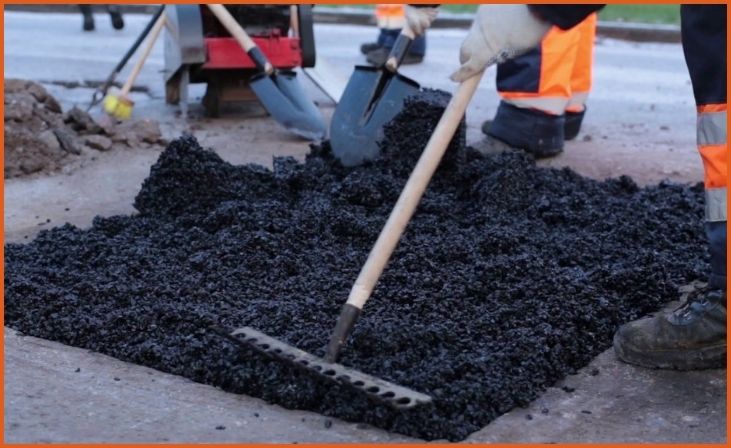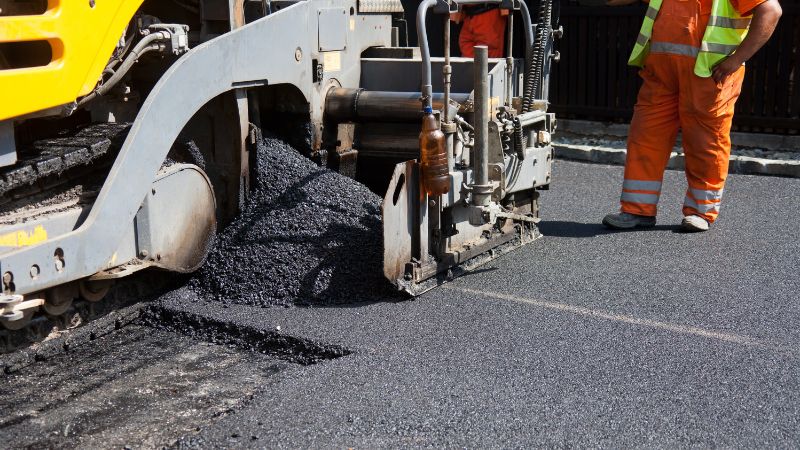Potholes are a common menace for asphalt pavements, causing damage and increasing repair costs over time. Fortunately, there are proactive steps you can take to shield your asphalt from these destructive depressions. By implementing effective preventive measures, you can extend the lifespan of your pavement and maintain its appearance. In this guide, we will explore nine essential strategies to protect your asphalt pavement from potholes. These tips cover everything from regular maintenance to proper drainage solutions, ensuring that your pavement remains smooth and resilient. Follow these guidelines to safeguard your investment and keep your asphalt in top condition.
9 Ways To Protect Your Asphalt Pavement From Potholes
1. Regularly Inspect Your Pavement

Regular inspections are essential for preventing potholes and extending the life of your asphalt pavement. Conduct visual checks at least twice a year, ideally during the spring and fall when weather conditions can exacerbate pavement issues. Look for signs of distress such as cracks, uneven surfaces, or water pooling. Early detection of these problems allows for timely repairs before they develop into more severe issues. Utilize a professional asphalt inspector for a thorough evaluation if you notice any significant damage. Regular inspections help you address minor issues promptly, reducing the risk of extensive damage and costly repairs in the future.
2. Implement Proper Drainage Solutions
Effective drainage is crucial in protecting asphalt pavement from potholes. Water infiltration is a major contributor to pavement damage, as it can cause the asphalt to weaken and develop cracks. Ensure that your pavement is equipped with proper drainage systems, such as gutters, drains, and sloped surfaces that direct water away from the pavement. Regularly clear debris from drainage systems to maintain their effectiveness. Installing perforated pipes or French drains can also help manage water runoff and prevent it from pooling on your asphalt surface. Proper drainage reduces the risk of water damage and prolongs the lifespan of your pavement.
Read Also: Common Asphalt Paving Mistakes
3. Seal Cracks and Joints Promptly
Cracks and joints in asphalt pavements can quickly lead to potholes if left untreated. Sealant applications are a practical solution to prevent water infiltration and further damage. Use a high-quality asphalt crack filler or sealant to fill any visible cracks or joints. The sealant should be applied during dry weather to ensure proper adhesion. It is essential to clean the cracks thoroughly before applying the sealant to remove any debris and moisture. Regular sealing helps protect the underlying asphalt from the elements and prevents the formation of larger, more costly potholes.
4. Perform Routine Pavement Maintenance
Routine maintenance is key to keeping your asphalt pavement in good condition and avoiding potholes. This includes tasks such as patching small holes, filling cracks, and resealing the surface. Regularly scheduled maintenance helps address minor issues before they escalate into more significant problems. Perform a detailed assessment of the pavement to identify areas needing attention. Consider using a professional maintenance service for tasks such as hot or cold patching, which can effectively repair damaged areas and restore the pavement’s integrity. Consistent maintenance ensures that your asphalt remains resilient and reduces the likelihood of pothole formation.
5. Use High-Quality Asphalt Mix

The quality of the asphalt mix used in your pavement plays a significant role in its durability and resistance to potholes. Opt for high-quality asphalt materials that are designed to withstand various environmental conditions and heavy traffic. Quality asphalt mixes typically include additives that improve flexibility and resistance to cracking. Consult with a reputable asphalt contractor to select the best mix for your specific needs. Using superior materials during installation or resurfacing helps ensure that your pavement can better resist the formation of potholes and other types of damage over time.
6. Address Subgrade Issues
The subgrade, or the layer of soil beneath the asphalt, is crucial to the stability and longevity of your pavement. Poor subgrade conditions can lead to uneven settling and contribute to the formation of potholes. Ensure that the subgrade is properly prepared before installing new asphalt or performing repairs. This includes compacting the soil and addressing any drainage or stability issues. Conduct soil tests to identify potential problems and make necessary adjustments to the subgrade. Proper subgrade preparation provides a solid foundation for the asphalt and helps prevent future pavement issues.
7. Manage Heavy Traffic Loads
Excessive traffic loads can cause significant stress on asphalt pavements, leading to potholes and other forms of damage. Implementing weight limits and traffic management strategies can help protect your pavement from overloading. Avoid placing heavy vehicles or equipment on the pavement whenever possible. Use traffic control measures such as signage to inform drivers of weight limits and potential restrictions. Regularly monitor traffic patterns and adjust maintenance practices as needed to accommodate heavy loads. Properly managing traffic loads helps prevent undue stress on the pavement and reduces the risk of pothole development.
8. Maintain Proper Asphalt Temperature
Asphalt temperature plays a critical role in its performance and resistance to damage. Extreme temperatures, both hot and cold, can affect the flexibility and strength of the asphalt. During installation or repair, ensure that the asphalt is applied at the correct temperature to achieve optimal compaction and durability. Avoid scheduling asphalt work during extreme weather conditions that could compromise the quality of the installation. Additionally, monitor temperature changes and perform necessary maintenance to address temperature-related issues. Maintaining the integrity of your asphalt surface and preventing early degradation may be achieved via proper temperature control.
9. Invest in Preventive Treatments

Preventive treatments are an effective way to extend the life of your asphalt pavement and prevent potholes. These treatments include surface sealers, rejuvenators, and crack fillers that protect the pavement from the elements and reduce wear. Surface sealers provide a protective layer that shields the asphalt from UV rays, water, and chemicals. Rejuvenators restore the flexibility of the asphalt, helping to prevent cracks and deterioration. Regular application of these treatments as part of a preventive maintenance plan can significantly enhance the longevity of your pavement and reduce the likelihood of pothole formation. Investing in preventive treatments is a cost-effective strategy for maintaining high-quality asphalt.
Read Also: How To Remove Old Oil Stains From Asphalt?
Conclusion
Preventing potholes is crucial for maintaining the integrity of your asphalt pavement. By following these nine strategies, you can effectively protect your surface from costly damage and extend its lifespan. Regular inspections, proper drainage, and timely repairs are key to keeping your pavement smooth and durable. Make sure your asphalt stays in great shape for years to come by investing in these preventative steps now.
FAQs
How often should I inspect my asphalt pavement for potential potholes?
Inspect your asphalt pavement at least twice a year, ideally during seasonal changes, to identify and address any issues before they worsen.
What is the best way to handle minor cracks in asphalt before they become potholes?
Fill minor cracks with asphalt crack filler or sealant as soon as they appear to prevent water infiltration and prevent further damage.



